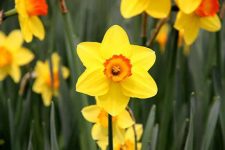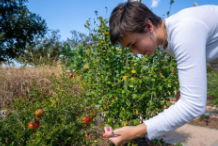Lawn-mowing season is here. Remember that dull blades give the lawn a whitish cast. A dull blade does not cut cleanly but rather shreds the ends of the leaf blades. The shredded ends dry out, giving the lawn that whitish look. A sharp mower blade is even more important when the turf starts putting up seed heads next month. The seed head stems are much tougher than the grass blades and more likely to shred. Under normal use, mower blades should be sharpened about every 10 hours of use. (Ward Upham)
Orchardgrass in Tall Fescue Lawns
Orchardgrass often infests tall fescue lawns. Unfortunately, orchardgrass is lighter green and faster growing than tall fescue, so it is very visible. Homeowners complain of the light green tufts of grass wherever this weed has become established. Even worse, there are no herbicides that will kill the orchard grass without also killing the turf. About the only good thing about orchardgrass is that it is a bunch grass and does not spread.
Orchardgrass often comes in as a contaminant in grass seed, especially K-31 tall fescue. Buying good grass seed is the first line of defense against this weed. Orchardgrass is a pasture grass and therefore is not found in the “weed seed” portion of the seed label. Rather, orchardgrass will be listed as “other crop seed.” Try to buy grass seed that has 0.0% “other crop seed.”
Control options are few and painful. Use glyphosate (Roundup, Killzall Weed and Grass Killer,
Kleeraway Systemic Weed and Grass Killer and others) to spot spray orchardgrass clumps. Any lawn grasses you hit will be killed, so keep the spots sprayed as small as possible. Wait until the spots have turned brown and then cut out the clumps and replace with a small piece of sod.
Large numbers of orchardgrass clumps may mean it is more practical to kill the entire lawn and start over. This should be done in the fall rather than now.
For information on identification of orchardgrass, including images, go to:
http://kswildflower.org/grass_details.php?grassID=15 \
Ward Upham, Extension Agent




